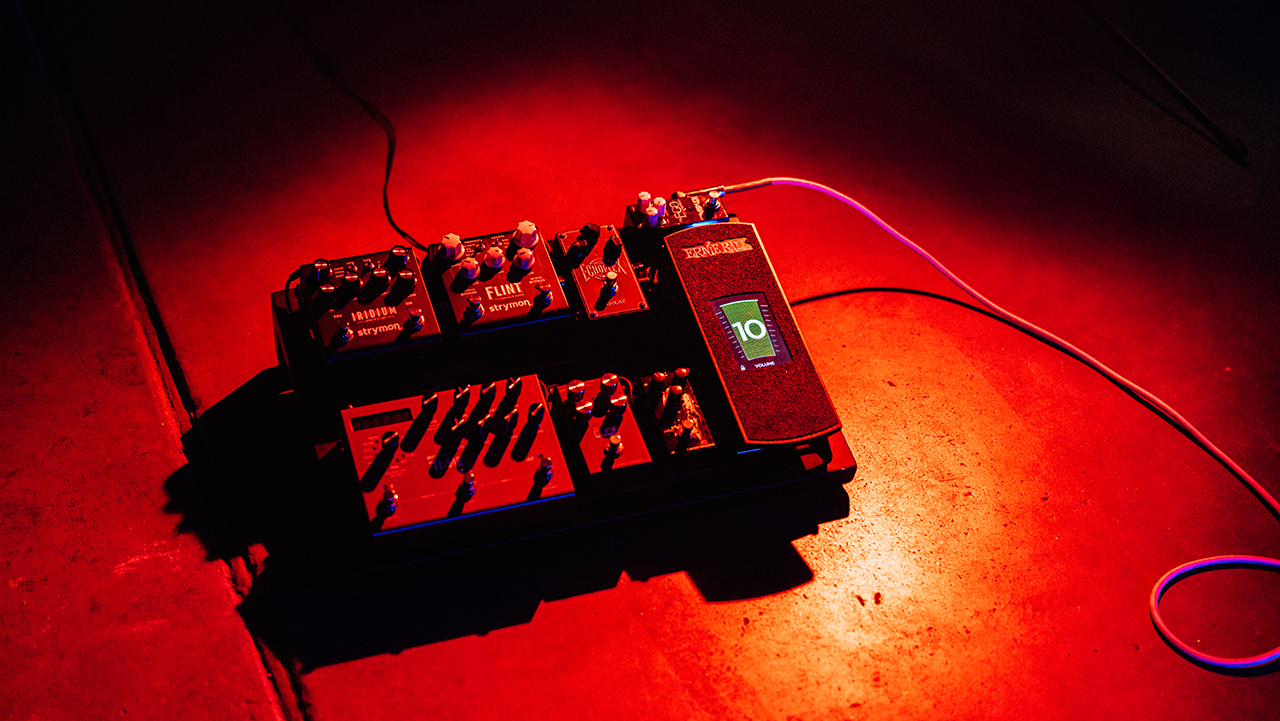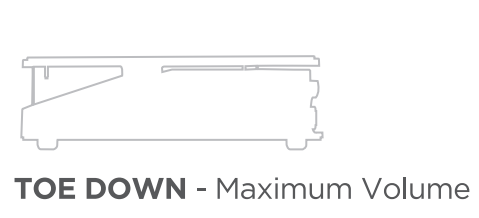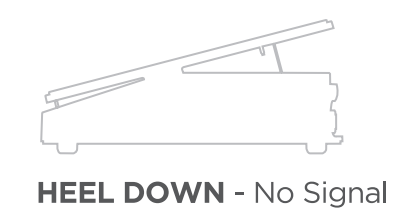After a year of further research and development, Ernie Ball is excited to finally bring the VPJR Tuner pedal to the market. The Ernie Ball VPJR Tuner is the perfect combination 2-in-1 pedal offering precise volume control with an enhanced definition digital tuner. The pedal features a fast and accurate chromatic tuner with a graphic volume display that is visually attractive and easy to operate.
We’ve compiled all of our most frequently asked questions about the pedal and are here to help clarify any pressing concerns.
What is the screen made out of and how break-resistant is it?
The screen on the VPJR Tuner Pedal is designed to be robust. But as an extra safety measure, each pedal is equipped with an additional tempered glass screen protector that can be easily replaced in case of accidental damage. If it breaks, it’s going to be a result of something coming in hard, direct contact with the screen. But, just like your cell phone, sometimes all it takes is hitting that sweet spot that causes the entire thing to shatter. We’ve made it as strong as possible and can assure with adequate care the pedal will remain intact and functioning to the best of its abilities.
Why is it shaped like an expression pedal rather than a stompbox?
Our VPJR Tuner is a combination of our renowned VPJR volume pedal and an enhanced definition digital tuner. For the first time, these two features are now offered in one convenient product.
Is it also a wah pedal?
While the VPJR Tuner pedal might look similar to a wah pedal, it only functions as a tuner and volume pedal.
Is it an expression pedal?
No. It is not designed to be an expression pedal, nor does it have an expression output. However, that doesn’t mean that your gear cannot accept it as one. If you desire to rig it up this way, we suggest reviewing the receiving equipment’s manual first.
How does it handle low registers, such as a five-string bass?
It can handle all of the notes on a 24 fret guitar or 5 strings bass in standard tuning, and more. If you want to get really technical, it goes from A0 to Bb6 (27.5Hz to 1864.66Hz).
Does it have a minimum volume control?
No. It goes from zero to one-hundred percent.
What are the minimum and maximum voltage?
It requires a minimum of 150 milliamps with 9V to 18V DC capabilities. A power supply is not included.
How accurate is the tuning?
The overall accuracy of the tuner is 0.1 cent. The visual in-tune display compensates when a new note transition is detected to account for the initial stretch of the string when the note is plucked. Meaning, depending on your string plucking preference (fast and repetitive or spaced out and ringing), our tuner will compensate to ensure your user experience is accurate and effective, thus remaining in-tune.
Can you change the reference pitch?
Yes. While the tuner is displayed and the screen is unlocked, double-tapping anywhere on the lower half of the touchscreen will display the reference pitch menu. Single tapping any of the frequencies shown will change the reference pitch of the tuner. The reference pitch ranges from 432 Hz to 447 Hz.
Why is it better than a clip-on tuner?
A clip-on tuner can change the resonant frequency of your guitar because it is physically clipped onto your instrument. It’s also based on a lot of mechanics that may or may not fail when you’re moving around with your guitar, such as how you’re holding the guitar or what other instruments are being played around you. Although the piezo elements used in most clip-on tuners are very accurate, none can match an instrument plugged directly into our VPJR Tuner.
Can it be used on passive or active instruments?
The VPJR Tuner pedal can be used on both passive and active instruments.
What makes this pedal unique versus other volume pedals on the market?
The VPJR Tuner is the only 2-in-1 volume pedal with an enhanced definition touchscreen that can display volume levels and accurately tune your instrument. The pedal’s rugged yet elegant mechanical design allows for complete control of volume swells, and the tuner’s accuracy is second to none.
How to Use the VPJR Tuner Pedal
Unlock the Touchscreen
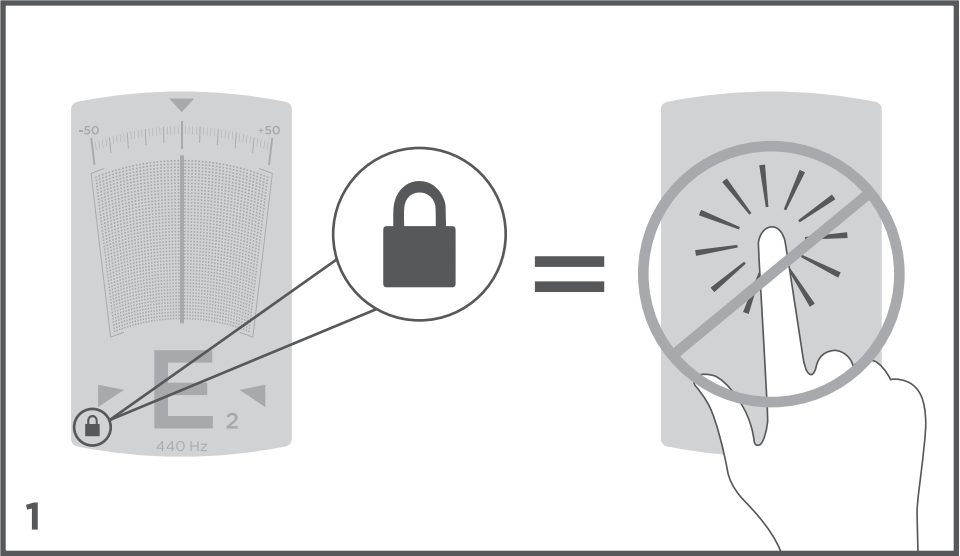
Step 1
Hold down the lock button for 5 seconds to unlock the screen.
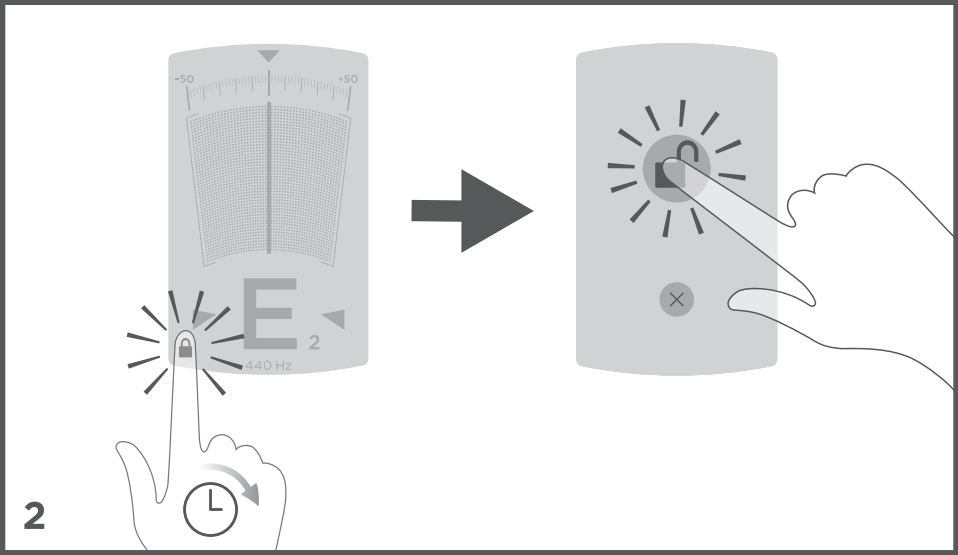
Step 2
Once you’ve unlocked the screen, you have the option to unlock the screen or cancel.
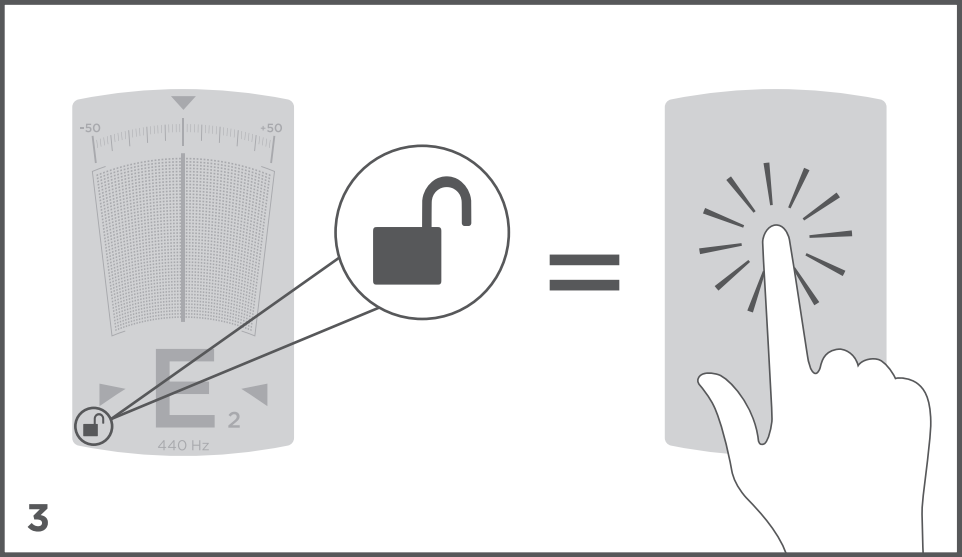
Step 3
To lock the screen, hold down the lock button for 5 seconds.
Front Panel
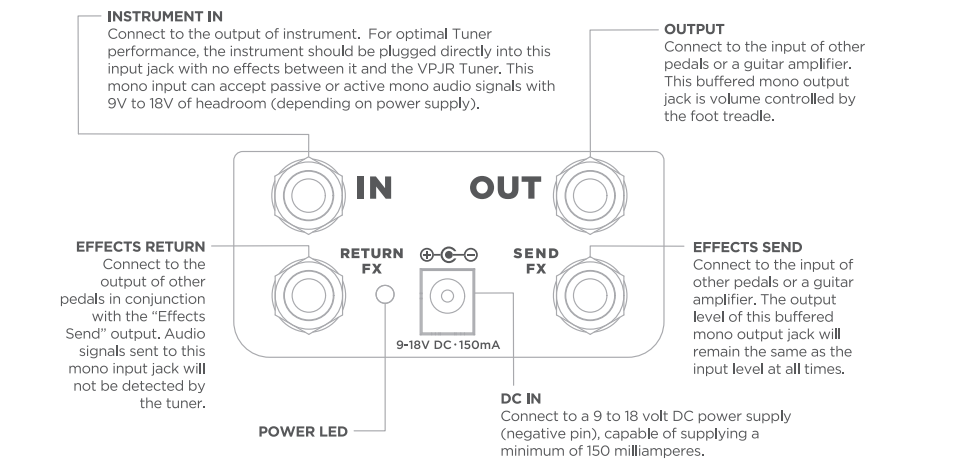
Expression Control
Rock treadle back and forth to adjust your desired amount of output volume.
Mode Menu
Double-tapping anywhere on the upper half of the touchscreen will display the Main Menu. Single tap on any of these pedal image to select one of the three modes. the pedal will remain in this mode, even after a restart, until changed by the user.
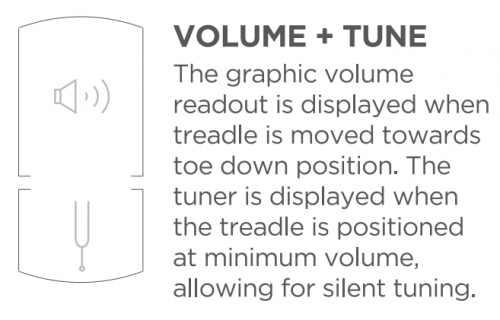
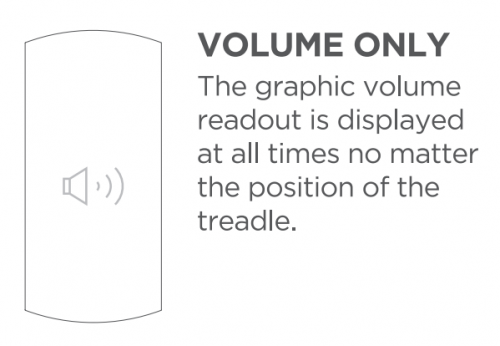
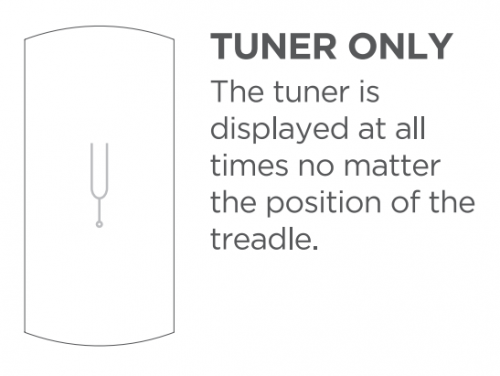
Tuner Screen
The chromatic tuner display allows for one string to be tuned at a time. The note and octave will appear on the bottom of the screen, and the needle will move towards the center of the display as the string becomes more in-tune. if the string is below the pitch of the note shown, the needle will be left of center. if the string is above the pitch of the note shown, the needle will be right of center. Once the string is at pitch, the needle will be vertical.
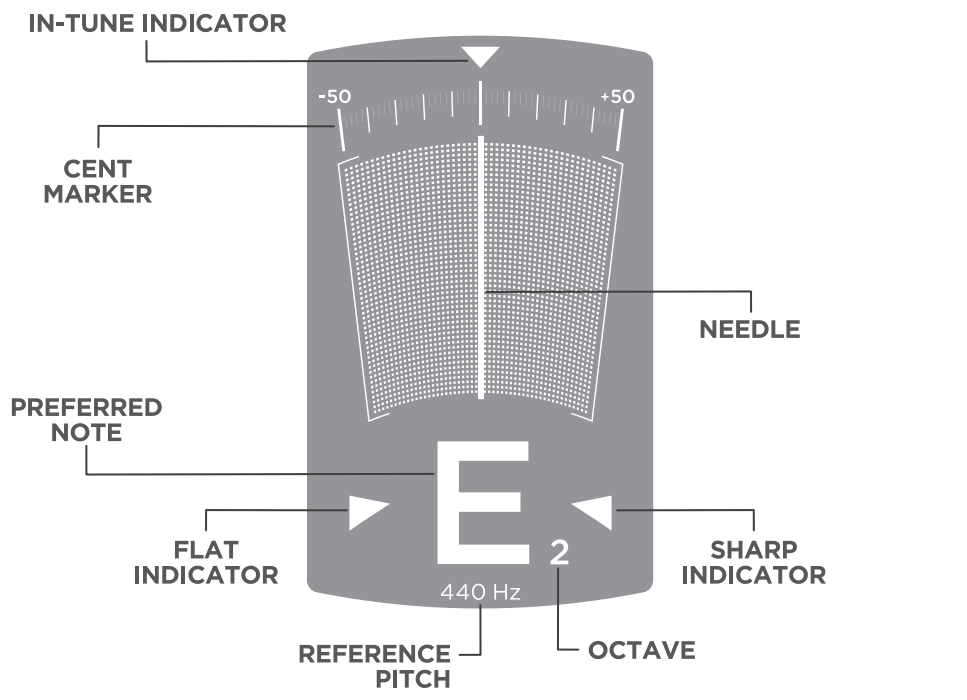
Pitch Screen
While the tuner is displayed, double-tapping anywhere on the lower half of the touchscreen will display the pitch menu. Single-tapping any of the frequencies shown will change the reference pitch of the tuner.
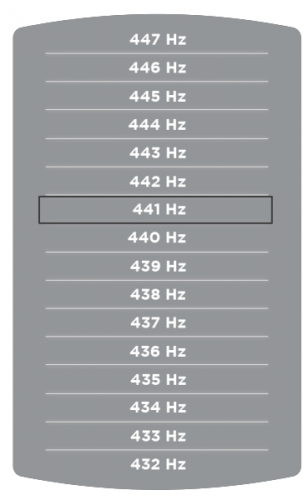
Volume Screen
The graphic volume readout shows the output signal “value” from 1-10, where 10 is the maximum.
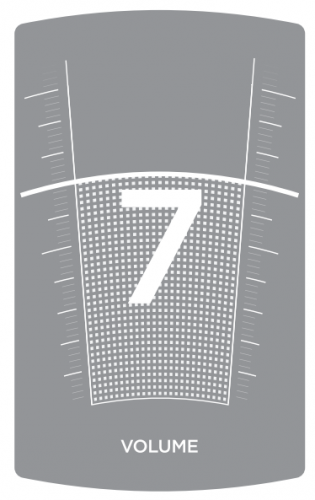
For step-by-step instructions on how to use the VPJR Tuner pedal, download the user manual here.


